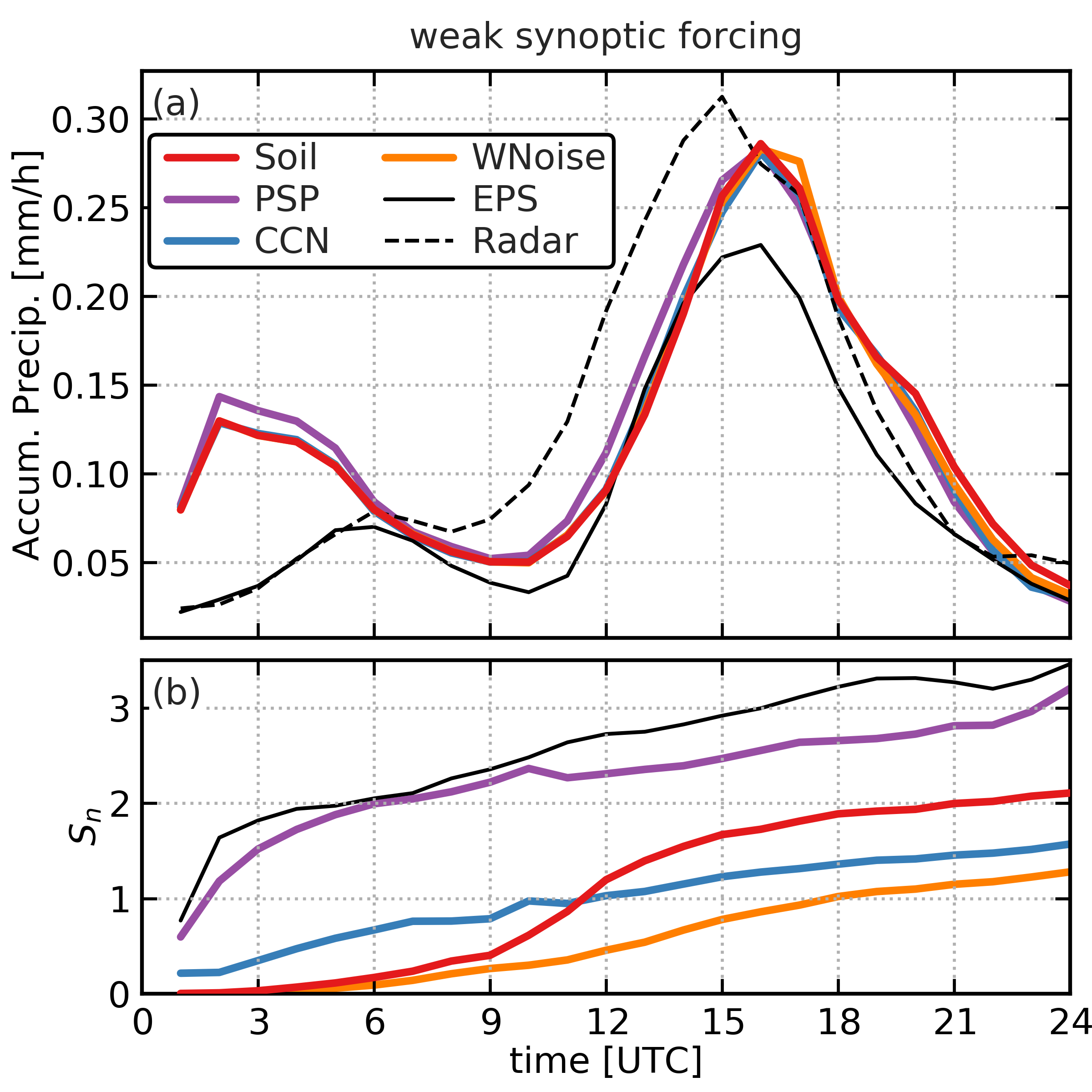keil_etal_unsicherheitsquellen
13.11.2019

Sources of uncertainty for convective-scale predictability
Forecasting convective precipitation remains one of the key challenges in weather forecasting. The predictability of convective precipitation depends on
many factors including uncertainties in the synoptic-scale flow, inaccuracies in the state and description of the atmosphere as well as of the underlying surface, and (...) approximations in the representation of key physical processes in weather models.
The relative importance of different perturbations was examined by collocating various COSMO sensitivity experiments for the high impact weather (HIW) period covering 10 days in May/June 2016 that caused serious flash-floods in central Europe. The spatial variability of precipitation in perturbed‐parameter ensembles exhibits clear differences whereas the total amount of daily precipitation is hardly changed. Soil moisture heterogeneity primarily introduces variability during convection initiation causing a steeper increase in normalized rainfall spread prior to the onset of afternoon precipitation. The stochastic boundary‐layer perturbations (PSP scheme) lead to the largest spatial variability impacting precipitation from initial time onwards, with an amplitude comparable to the operational ensemble spread.
Reference:
Keil, C., F. Baur, K. Bachmann, S. Rasp, L. Schneider, C. Barthlott, 2019, Relative contribution of soil moisture, boundary layer and microphysical perturbations on convective predictability in different weather regimes, Q. J. R. Meteorol. Soc., 145, 3102-3115, (link).

